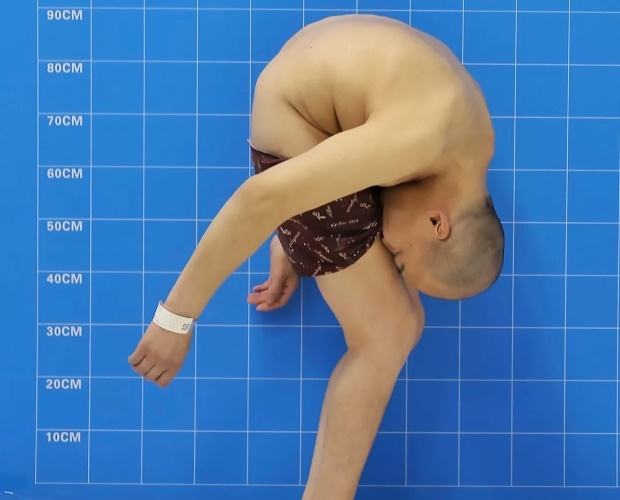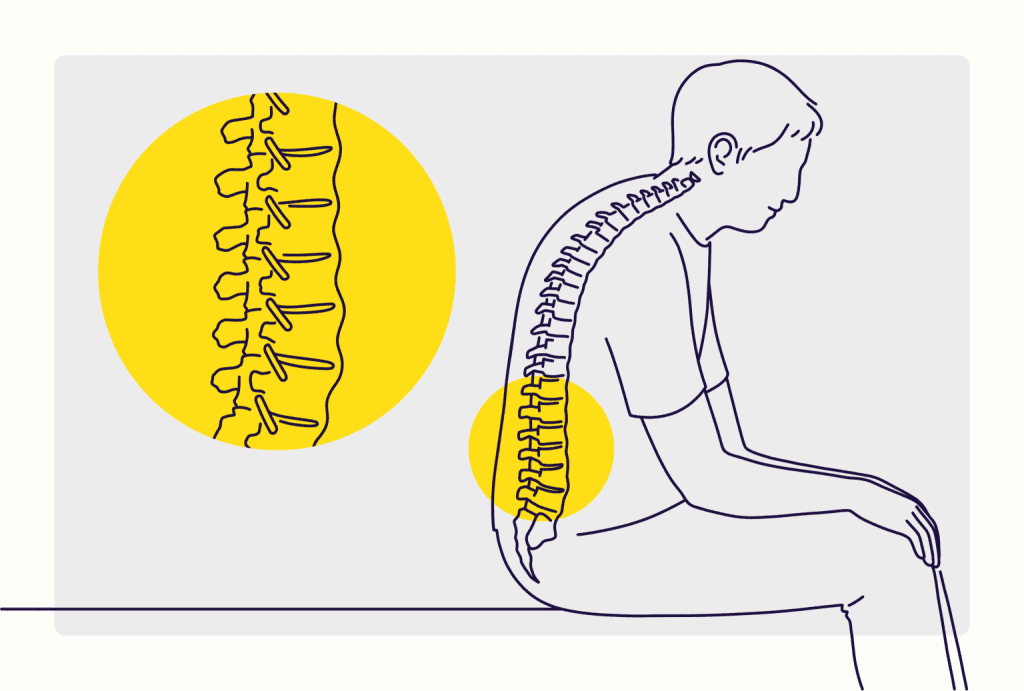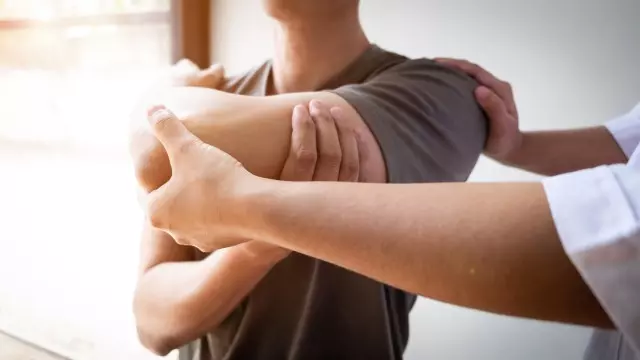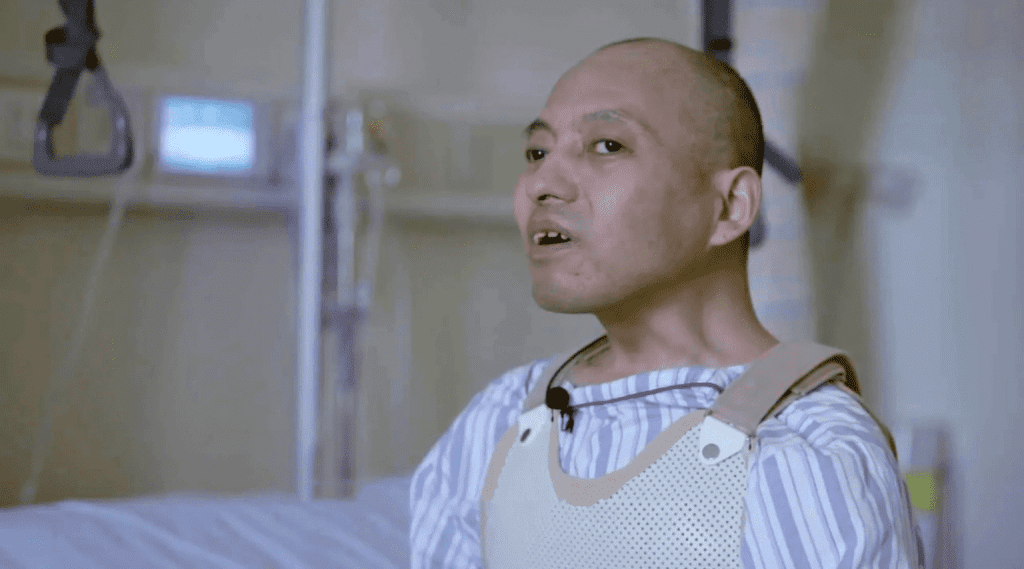For 28 years, Li Hua lived in a painful, folded position due to a severe case of ankylosing spondylitis, a chronic form of arthritis that primarily affects the spine. Diagnosed with the condition at the age of 18, Li’s condition progressively worsened over the years, leaving him unable to stand up, lie down, or even look straight ahead. His story is one of unimaginable hardship, as the debilitating disease ravaged his body and left him trapped in a state of constant suffering.

Ankylosing spondylitis (AS) is a chronic and often debilitating condition that typically begins in adolescence or early adulthood. It is a form of arthritis that causes inflammation in the spine, leading to the fusion of vertebrae. As the disease advanced in Li Hua’s case, his spine became severely deformed, causing his upper body to bend forward until it was almost folded over his lower limbs. This progressive fusion and deformation left him in a permanent forward-bending position, making everyday activities nearly impossible.
For decades, Li Hua struggled with the physical and emotional toll of his condition. Simple tasks like eating, drinking, and sleeping became monumental challenges, and his family, unable to afford the necessary treatment, watched helplessly as his health deteriorated. Li was even refused medical treatment in his home province of Hunan, China, because doctors deemed the surgery too risky and believed he would not survive the procedure.
Li Hua’s life took a turn for the better when Professor Tao Huiren, the head of the spinal surgery and orthopedics department at Shenzhen University General Hospital, decided to take on his case. Despite the high risks, including the possibility of paraplegia, Professor Tao was determined to help Li regain his life.
The surgery that Li Hua underwent was nothing short of miraculous. To correct his spinal deformity, Professor Tao and his team had to carefully break and realign his bones, including the femur, cervical vertebrae, thoracic vertebrae, and lumbar vertebrae. This complex procedure involved straightening his entire spinal column, a task that carried risks 20 to 30 times greater than a typical spinal surgery. The potential for complications, including permanent paralysis, was incredibly high.

Against all odds, the surgery was a resounding success. After nearly three decades of living in a folded position, Li Hua is now able to stand up, sit down, and lie flat. For the first time in years, he can look straight ahead and see the world from an upright perspective. The transformation has been life-changing, both physically and emotionally.
Ankylosing spondylitis is not a common condition, affecting only about 0.2 to 0.5 percent of the population in the United States. It is believed to have a genetic component, with the HLA-B27 antigen being a significant marker. This antigen, found on the surface of white blood cells, plays a role in the immune system and is associated with several autoimmune diseases, including AS.
The presence of the HLA-B27 antigen can increase the likelihood of developing ankylosing spondylitis. This antigen is detectable through a blood test, which doctors may use if they suspect a patient has AS. While having HLA-B27 doesn’t guarantee that a person will develop the condition, it does suggest a higher risk.

Treating ankylosing spondylitis involves managing symptoms and preventing further spinal damage. Nonsteroidal anti-inflammatory drugs (NSAIDs) are often the first line of defense, helping to reduce inflammation, pain, and stiffness. For those who don’t respond to NSAIDs, biological medications like tumor necrosis factor (TNF) blockers or interleukin-17 (IL-17) inhibitors may be prescribed. These treatments target specific aspects of the immune system to reduce inflammation and prevent further joint damage.

Physical therapy is also a crucial component of AS treatment. Regular exercise can help maintain flexibility, strength, and overall mobility. For Li Hua, physical therapy will play a significant role in his recovery, helping him regain full movement and adapt to his newly straightened spine.
Surgery is typically reserved for severe cases of ankylosing spondylitis where other treatments have failed, or where spinal deformities have become disabling. In Li Hua’s case, surgery was the only option left to restore his quality of life. While most people with AS do not require surgery, those who do can experience significant improvements in their mobility and comfort.
Li Hua’s surgery has given him a new lease on life. Although he is currently using a walker to assist with mobility, doctors are optimistic that with continued physical therapy, he will be able to walk unaided. While he may not be able to engage in high-impact activities, he can now enjoy a level of independence and comfort that was previously unimaginable.

Li Hua is deeply grateful to Professor Tao and his team for giving him his life back. He also credits his mother, who was his primary caregiver for many years, with helping him endure the hardships of his condition. “There would’ve been no cure for me without Doctor Tao. He’s my savior, and my gratitude to him is second only to my mother,” Li said.
Li Hua’s journey from being the “Folding Man” to standing tall is a testament to the power of medical innovation and the human spirit. His story highlights the importance of perseverance, hope, and the incredible impact that skilled medical professionals can have on a person’s life. As Li continues his recovery, he serves as an inspiration to others facing similar challenges, proving that even in the darkest of times, there is always hope for a brighter future.


